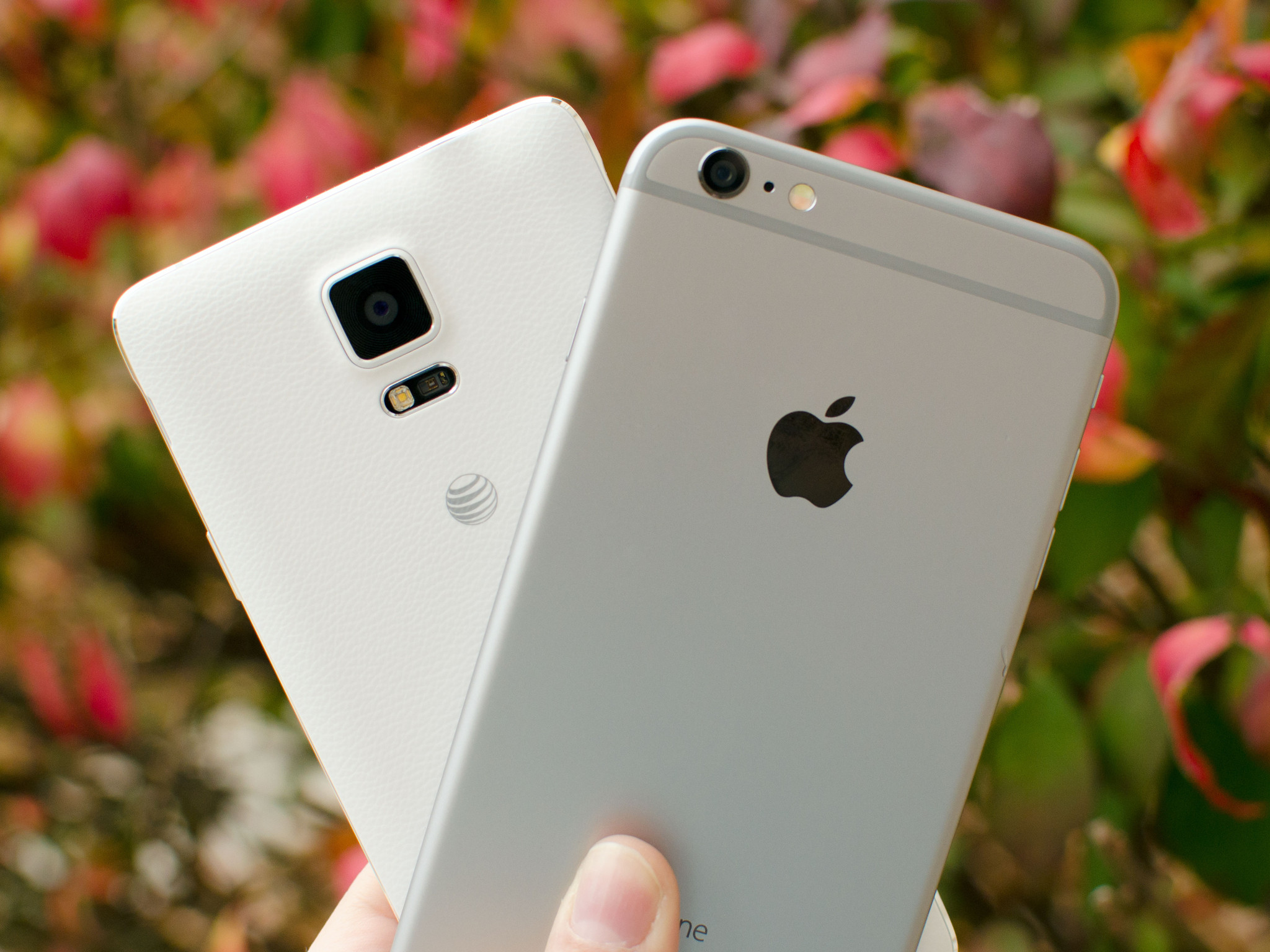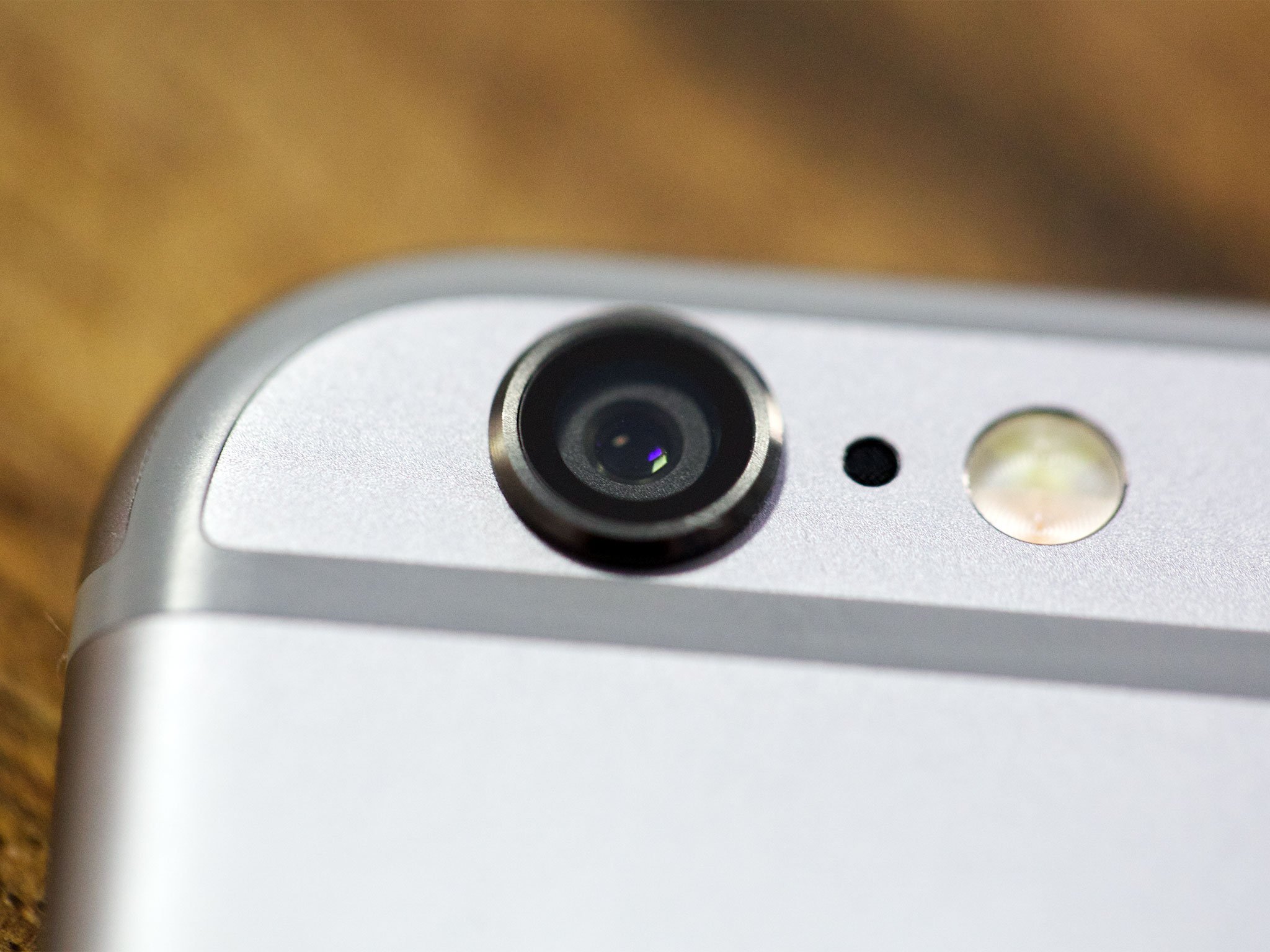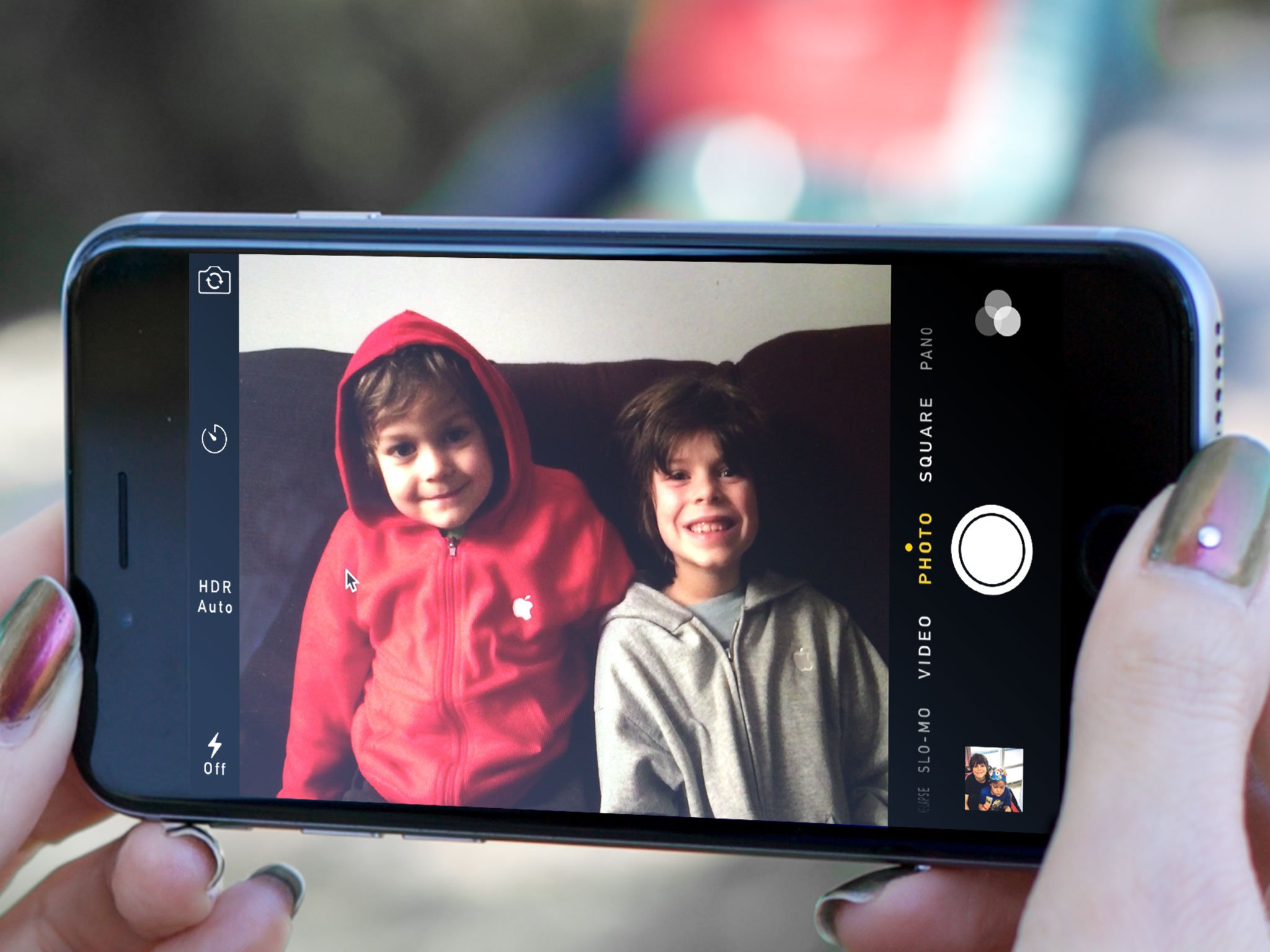Switch to iPhone: For a better everyday camera!

There's never been a better time to switch to iPhone. Whether you're tempted for yourself or looking to help the Android user in your life, the all-new, all-better iPhone 6 and iPhone-6-plus make the move more compelling than ever — especially with their incredible everyday cameras.
The megapixel myth

The iPhone 6's rear-facing iSight camera is 8 megapixels. Some might argue that more would be better; we saw the megapixel race in point-and-shoot cameras, however, and we know how senseless it is. Megapixels represent quantity, not quality. To get more megapixels, manufacturers carve the image sensor up into smaller pixels that take in less light. That typically results in larger photos of poorer quality. That's why Apple made the choice not to go for more pixels, but for bigger pixels — 1.5 microns at f/2.2. Because they're larger, they take in more light and result in better-quality photos.
If you really want to shoot images sized for posters or billboards, or want to take advantage of significant downsampling, it's okay to look for megapixels. If you want truly great photos, however, you'll need to look beyond them.
The everyday advantage

The biggest advantage of the iPhone 6 and iPhone 6 Plus cameras is that you can just pull them out, take a snap, and in almost every situation — sunrises, landscapes, landmarks, kids, pets, parties, dinners, selfies, you name it — you get just about the best photo possible. There's no complex software or settings to fuss with; just point, tap, and you've got a great picture.
That's why Apple doesn't need to hang a huge lens off the back or rely on server-side processing. From the custom Image Signal Processor (ISP) to the in-house Camera app, the company designs everything themselves and tightly integrates it all together.
Auto-everything

The iPhone 6 and iPhone 6 Plus sport a five-element lens with a sapphire crystal lens cover, a hybrid IR-filter, and an 8-megapixel backside illuminated sensor (BSI) to let in as much light as possible. It also offers auto-focus, auto-exposure, and auto-white balance to make sure your photos are sharp, bright, and the colors look the way they're supposed to.
Apple has also added what the company calls "focus pixels" to the iPhone 6 and iPhone 6 Plus. Typically found in higher-end cameras, focus pixels allow for "phase-detection autofocus:" Dedicated pairs of pixels in the image sensor read the light and instruct the camera's optics on how to properly adjust, so as to lock onto the scene in front of it. The result is faster focusing — almost instant, really.
iMore offers spot-on advice and guidance from our team of experts, with decades of Apple device experience to lean on. Learn more with iMore!
The iPhone can also lock onto multiple faces and smaller faces than ever, even in burst mode; your device looks for open eyes and smiles, and then automatically sorts and presents the best of both for your images.
There's also automatic high dynamic range (HDR) with next-generation tonal mapping to make sure you get as much detail as possible in both the light and shadows of your image. For the iPhone 6 Plus, there's additional optical image stabilization (OIS), allowing the aperture to stay open longer which results in less noise during low-light situations.
Taken together, it means from the moment you tap or hold down the shutter button, an incredible amount of technology is working to make sure the picture or pictures you get are as best as they can possibly be.
All the right modes (and manuals)

In addition to standard photos and bursts, the iPhone 6 and iPhone 6 Plus can take time-lapse photos, panoramas with dynamic exposure, square photos, and even add live effects or filters.
If you're an experienced photographer who prefers controlling every aspect of the photography process yourself, you can download one of many manual camera apps from the App Store. That way you can adjust focus, exposure, and color balances just the way you want them.
Why the camera matters

The idea that the "best camera is the one you have with you" puts an incredible responsibility on smartphone makers. We're trusting them to capture the most important moments of our lives, often at a moment's notice. They need to be up to the task. And so far, Apple has been far in the lead.
Vlad Savov of the Verge, recently wrote about his Android phone getting outshot by casual iPhone photographers:
In all the years of Android's existence, in spite of huge investments of time and money, there's never been a standout Android cameraphone. Some have cameras that are better in low light than the iPhone's, many have higher resolution, and a number claim to be faster at focusing — but none pull it all together into the same comprehensive package that the iPhone can offer. Samsung and LG give you a pared-down "just shoot" experience, but they lack software polish and speed; Motorola's camera launches and shoots quickly, but the quality is mediocre; and Sony manages to combine an excellent image sensor with terrible autofocus. Microsoft's PureView cameras fare better, but the Windows Phone camera app is comparatively slow and unintuitive, and there's a reason why former Lumia chief Ari Partinen is now tagging his photos with #iPhone6Plus instead of #Lumia1520.
It's not just journalists having that revelation, either. Here's one of our readers, Brad Littler:
I switched from a Nexus 5 when the iPhone 6 launched. I've had android Phones ever since the EVO 4G and switching wasn't an easy decision but ultimately it came down to the camera on the iPhone's camera, nothing on android really even compares to that and after having my first kid this year I find it more important to have a good camera than anything else.
The advantage of Apple's entire ecosystem comes into play as well, as pointed out by another of our readers, GGIBS:
I went from a Galaxy S5 and actually paid to go back to iPhone. I am a Mac user at home and the hand off features are awesome. Plus it is far more convenient to have everything on the same ecosystem.
Beyond that, over the holidays I tried taking pictures with my Galaxy S5 camera and the shot it showed me right before the snap was sadly not the shot I got. My images were often blurred, dark, or grainy — and this on a supposed better camera than the 6! I do also miss iCloud's backup, which allows any pictures I take to automatically back up to my Mac and iPad.
Time to switch!
If the lack of a high-quality, easy-to-use camera has been frustrating you or someone you know, here's the good news: The iPhone 6 and iPhone 6 Plus offer not only the best everyday cameras you can find on a phone, but the best camera apps to take advantage of them as well. It's just one of the benefits you get by switching to iPhone.

Rene Ritchie is one of the most respected Apple analysts in the business, reaching a combined audience of over 40 million readers a month. His YouTube channel, Vector, has over 90 thousand subscribers and 14 million views and his podcasts, including Debug, have been downloaded over 20 million times. He also regularly co-hosts MacBreak Weekly for the TWiT network and co-hosted CES Live! and Talk Mobile. Based in Montreal, Rene is a former director of product marketing, web developer, and graphic designer. He's authored several books and appeared on numerous television and radio segments to discuss Apple and the technology industry. When not working, he likes to cook, grapple, and spend time with his friends and family.
